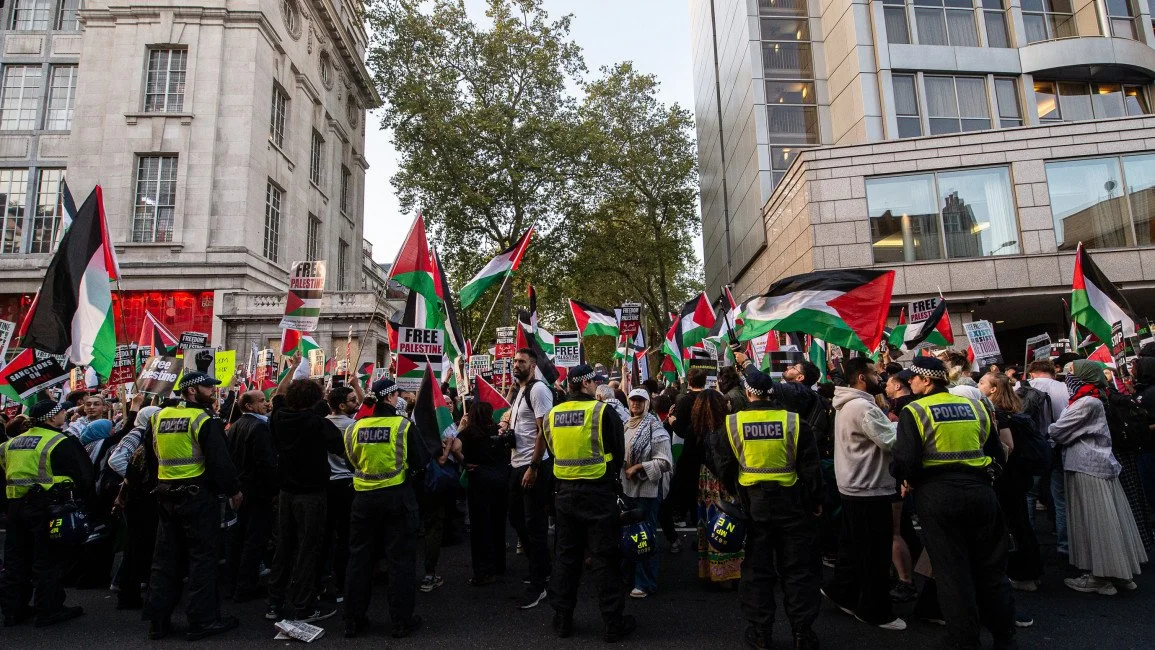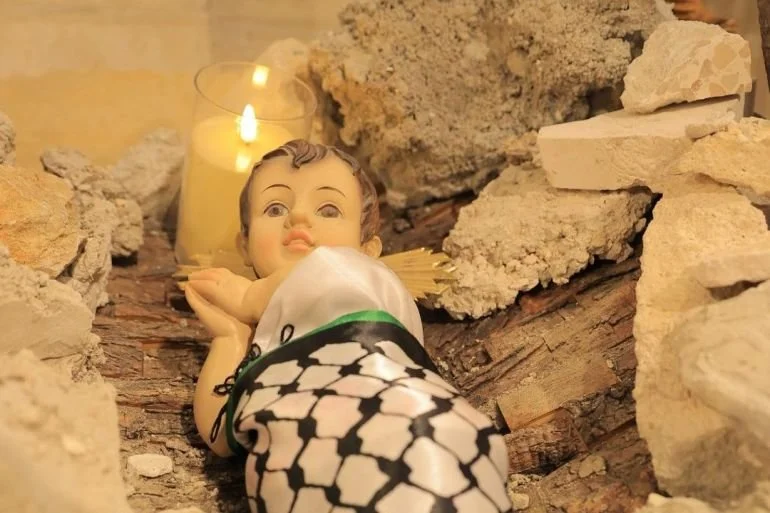What do our Muslim friends make of Hallowe’en? Read our article with ideas on how to talk to Muslims about Halloween and find links to other blog posts about Halloween from Mahabba members’ experiences.
Origins of Islam
What Do Muslims Believe?
Muslims vary hugely across the globe, but there are some basic beliefs and practices that the vast majority of Muslims would view as normative, whether or not they adhere to these closely.
Commonly, there are six articles of faith that Muslims are meant to believe and five pillars of faith they are meant to practice.
My Muslim friends at Muharram & Ashura
Muslim Festivals
Annual Muslim festivals & their dates
Resources > Engaging Muslims > Engaging as individuals > Muslim festivals
Muslim festivals are good opportunities for getting to know our neighbours and for conversations about faith. Here are the major festivals in the year, with some information about them and the dates for this year and next (dates may very slightly according to the when the new moon is sighted).
Laylat al-Miraj
Laylat (or Lailat) al-Miraj marks the night-time journey of the prophet Muhammad from Mecca to what the Qur'an describes as the 'farthest mosque in Jerusalem,' now the Al Aqsa Mosque. It has been described as both a physical and spiritual journey. Muslims believe Muhammad traveled on the hore Buraq to "the farthest mosque" where he led other prophets in prayer. He then ascended to heaven where he spoke to Allah, who gave him instructions to take back to the faithful regarding the details of prayer.
Some Muslims gather at their local mosque for prayers, while others celebrate at home by telling the story of Muhammad's journey to children and reciting prayers at night.
Nowruz
Nowruz marks the first day of spring and the beginning of the year in the Persian calendar. Before the collapse of the Soviet Union, Iran was the only country that officially observed the ceremonies of Nowruz. When the Central Asian and Caucasus countries gained independence from the Soviets, they also declared Nowruz as a national holiday.
Shab e Barat
Also called Laylat al-Bara'at, this is when Muslims believe the fortunes of men are decided for the year ahead and when Allah descends to earth and offers mercy and forgiveness to sinners. Prayers are held through the night so that worshippers can ask for forgiveness for themselves and for their dead ancestors. Lamps are lit outside mosques.
Additionally, Twelve Shia Muslims commemorate the birthday of Muhammad al-Mahdi on this date.
Ramadan
During this month, Muslims fast from before dawn through to sunset. Fasting means no food or drink and also refraining from smoking, sex and 'sinful behaviour' such as swearing, lying and gossiping.
Muslims believe Ramadan is the month in which the first verses of Islam’s holy book, the Qur’an, were revealed to Muhammad.
Within the last 10 days of Ramadan is the celebration called Laylat al-Qadr, meaning Night of Power or Destiny. This is when the first verses of the Qu'ran were revealed and is said to be the night when sins are forgiven and the blessings and mercy of Allah are abundant. Many traditions observe it on the 27th night of Ramadan.
Read more about Ramadan here.
Eid ul-Fitr: Festival of Breaking the Fast
This is the Festival of the Breaking of the Fast. It marks the end of Ramadan. Eid ul-Fitr is celebrated for one, two or three days. Common greetings during this holiday are the Arabic greeting ‘Eid Mubārak ("Blessed Eid")
Hajj
This is the annual pilgrimage to Mecca, a journey that is required at least once in a Muslim worshipper's lifetime if they are financially and physically able to do it. Up to three million Muslims perform the pilgrimage every year.
The second day of the Hajj is called the Day of Arafah, commemorating Muhammad's final sermon, which was delivered from Mount Arafah. Pilgrims hold a vigil at Arafah, where they pray, repent for their sins and ask for mercy from Allah.
Read more about how the Hajj relates to your Muslim friends here.
Eid ul-Adha: Festival of Sacrifice
This is the second Eid celebration in the Muslim year. The holiday lasts from three to 16 days, depending on the country.
It commemorates Ibraham’s willingness to sacrifice his son. He was about to go ahead when he was shown a ram to slaughter instead. Muslims mark the occasion by sacrificing a lamb, goat, cow or other animal and sharing the meat with friends and neighbours, and with the poor and needy.
Read more about how Eid ul-Adha relates to your Muslim friends here.
Islamic New Year and Muharram
The first day of the month of Muharram, the first month in the Islamic calendar, is Islamic New Year.
The Islamic calendar began in 622AD with the migration of the prophet Muhammad and his followers from Mecca to Medina, the Hijra, to escape persecution. It is used to date events in many Muslim countries.
Read more about how Muharram relates to your Muslim friends here.
Ashura
Ashura falls on the 10th day of Muharram.
For Shia Muslims, Ashura marks the anniversary of the tragic death of the prophet’s grandson, Husain, and 72 companions at the battle of Karbala in 680AD. They mark the day with mourning and sometimes by re-enacting the tragic event.
Arba'een
This is a Shia Muslim religious observance that takes place 40 days after Ashura, the traditional length of mourning. It commemorates the martyrdom of Husain, the grandson of Muhammad in the Battle of Karbala.
Arba'een sees one of the largest pilgrimage gatherings in the world, with millions of Muslims marching on foot to Karbala in Iraq.
Maulid Al-Nabi: the prophet’s birthday
Maulid (or Mawlid) al-Nabi means 'birth of the prophet'. The exact date of Muhammad's birth is not known but is often regarded as the 12th day of the month by Sunni Muslims, although Shia Muslims believe the prophet's birthday was on the 17th day.
This date is observed by praise, fasting, public processions, poetry, family gatherings and the decoration of streets and homes.
Read more about how the prophet’s birthday relates to your Muslim friends here.
New Book: Encountering the World of Post-Islam
Encountering the World of Post-Islam
By Ben Adam
2024. Regnum Books International (Imprint of the Oxford Centre for Mission Studies). 50 pages. ISBN 978-1-917059-12-1 (Paperback)
Ben's book explains who post-Islam Muslims are. He describes a hidden post-Islam world where there are seekers, agnostics and atheists in abundance, some, very secretive, others audacious. In their journey beyond Islam many have had no direct contact with Christians and the author is keen to make sure that we are equipped to help such post-Islam Muslims encounter Christ.
Rather than chapters Ben uses subject titles. A brief Preface and Introduction launch us into seven sections.
(1) What is Post-Islam and Why Does it Matter
(2) The Rise of Post-Islam
(3) The Biblical Idea of Ideological Struggle
(4) Where and How Do We Find Post-Islam
(5) How does Post-Islam Help (or Hinder) the Message of the Gospel
(6) Discipling the World of Post-Islam 1: Spreading the Message
(7) Discipling the World of Post-Islam 2:Teaching them to Obey Everything
Let me begin with Ben’s definition of a post-Muslim, “One born or converted into Islam who no longer believes in its fundamental truth claims.” (Adam page 5) He unpacks the options and ends section (1) with the question, “How can post-Muslims come to know and follow Jesus?” (Adam page 6)
Section (2) highlights possible reasons for the rise of post-Islam, including accessibility to online religious debate, higher educational attainment resulting in scepticism, dialogue that encourages critical comparison, and socio-political incentives. Such a newspaper headline as, “Khamenei believes that the future of the world is Islam” (iNewspaper 19 April 2024 page 9) illustrates a country whose government’s fundamentalism might generate opposition to Islam and encourage post-Islam. Registering asylum seekers from Muslim countries at a local drop-in, I have noted in recent years some prefer to answer the question, “Religion,” with the response, “None.”
Section (3) is a useful Biblical reflection on 2 Corinthians 10:3-6 and provides a theological framework for the discussion of where many of the post-Islamists find themselves, i.e. “in the strongholds that set themselves up against the knowledge of God.” (2 Cor.10:5) Ben writes, “Encountering the world of post-Islam means taking the opportunities offered by the breaking up of a hostile power.” (Adam page 14)
In Section (4) Ben begins to signpost us to practical lessons to be learnt. One lesson is that we are not to assume another’s beliefs when it comes to post-Islam. Cultural post-Islam Muslims may never have set foot in a mosque let alone a Qur’anic school. Listen and learn. My experience with one borderline post-Muslim was that the person’s curiosity in agnosticism, fostered on the internet, had led the individual, simply, to want to know more about Jesus. Not once, over a period of quite a few years of reading the New Testament together, did the person ever seek an argument. There was a genuine desire to fill a knowledge vacuum.
A second lesson is that post-Islam folk like to meet in safe spaces, a point that Ben repeats later. One place of encounter is on the internet, another, retail outlets, both familiar environments where generous hospitality can be expressed.
In Section (5) we are introduced to the positive and negative aspects of ministering to post-Muslims. Some come with a guileless openness, others with a history of the supernatural, visions, dreams, and miracles associated with Jesus, and others with a considerable knowledge of the Christan scriptures. Others, observant of the failings of Western society, are sceptical about Christ’s ability to transform immoral behaviour. Others are happy with their new secular values and lifestyle.
The final two Sections (6 and 7) are loaded with theological insights and practical suggestions. Ben comprehensively reinforces many of the points he has already made, e.g., listening, not making assumptions. It is not so much unlearning the traditional ways of evangelism, church planting and discipleship among Muslims but a critical reviewing, refining and augmenting our ministry tool chests. Here are a few ideas that Ben develops towards the end of his book. I offer them as appetisers.
He proposes that we should:
see ourselves in the role of a “teacher” (Adam page 33) rather than a “friend” to the post-Muslim,
encourage the post-Muslim Christian to see the Christian community as a “third culture” which allows the person to relate to his/her Muslim family and secular society through the eyes of Christ – the church being between mosque and family (Adam page 39),
focus on discovering and engaging with post-Muslims in safe spaces which are endemic in large, multi-cultural cities (Adam page 32),
envisage that “mavericks” may be the most effective post-Muslim evangelists (Adam page 32),
focus on following-up media contacts,
look for opportunities where there is antagonism with Arab-Islam (Adam page 36), i.e. contexts where the “strongholds” of Islam have broken down (Adam page 36),
consider that the closer the work is to the point of alienation and disappointment with Islam, the more likely post-Muslins are to respond to the gospel (Adam page 37),
remember that the goal for the church among post-Muslims is to create for them a new identity (Adam page 40) which may be best achieved through the multicultural church movement (Adam page 42),
address what being a worshipping community with post-Muslim Jesus followers might look like (Adam page 45).
These and other subjects signal that there is much reflection, wrestling and labouring that lies ahead to understand and minister to this young generation of post-Muslims.
Ben lays down markers for us which are extremely timely. He concludes.
“The number of post-Muslims is growing rapidly, and, as it does, so does the challenge and opportunity.” (Adam page 47).
To whom would I recommend this book?
To anyone with a passion for Muslim people groups, especially those among whom significant numbers of people are abandoning their Islamic faith, embracing another religion, notably Christianity, agnosticism or atheism. Anyone interested in global faiths and the growth of secularisation in the 21st Century, Anyone interested in religious fundamentalism, especially within Islam, and Islamic-counter apostasy movements.
Only 50 pages, but a book that punches above its weight.
May Ben’s book kindle conversations and ignite new initiatives.
Keith Fraser-Smith
May 7, 2024
Eid ul Adha as opportunity
Blind Spots in our Welcoming
When inviting our Muslim friends to our homes or church it is important to be aware of the religious and cultural differences between Islam and Christianity, and also within Islam and Christianity.
Below is (or soon will be!) a series of articles to help us grow in our sensitivity.
The Treatment of Sacred Scripture
We all interpret what other people do through our own cultural lens and this can result in mutual misunderstanding of behaviour and beliefs. Muslims have clear ideas about how holy books should be treated because of what they have learned from the traditions of Islam.
Most Muslims today hold the Qur’an in the deepest respect and have set rules about how it is used. It is expected that a good Muslim would be ritually clean before handling an Arabic Qur’an. This would involve washing the hands, the face, arms and feet. When not in use the Qur’an would be covered and placed high on a book shelf, above where people sit. For many non-Arabic speaking Muslims, this is where it may stay. Muslims receive a blessing from reciting or listening to the Qur’an in its original language, perhaps even if they do not understand it. It would be seen as disrespectful by a Muslim, if a Christian was seen to place their Bible on the floor, or to write in it.
For Muslims, it is not considered good practice to allow a person suffering from mental health problems to touch an Arabic Qur’an. This is to prevent them disrespecting the Qur’an by accident, for example, by dropping it on the floor. They can, however be provided with a recording of verses from the Qur’an which they can listen to, as this does not have the same status as the written word. There have been many documented cases in some countries, of accusations of blasphemy when people with mental health issues have been accused of disrespecting or desecrating the Qur’an, and been killed by outraged mobs for their mistake. This contrasts with the widespread practice in Christianity of supplying Bibles to the sick and infirm in Hospitals, for the spiritual support of the sufferer.
Upon entering the toilet, Muslims must not carry the Qur’an or any part of it or wear something that has the name of Allah engraved on it. Thus going to the toilet while carrying something that has Allah’s name on it, (such as rings, bracelets, necklaces etc.) is not recommended. This is because the name of Allah must be revered.
It is reported that the Prophet used to remove his ring whenever he went to the toilet as the ring had the name of Allah on it.
It is strictly forbidden to take the Muslim Holy Book into the toilet and many Muslims would be very concerned and confused to see passages of the Christian Holy Book on display inside a toilet or a cubicle. However, this practice appears to be becoming more and more widespread, in churches and Christian Homes.
Ideas for Night of Power Prayer
Praying on the Night of Power
Medina in Birmingham
Medina in Birmingham, Najaf in Brent: Inside British Islam, by Innes Bowen
Don’t know your Deobandi from your Bohras? Innes Bowen provides a clear and detailed guide to the variety of Muslim streams and movements present in the UK. Although the book is now ten years old, it is still an invaluable source of background information. Bowen’s agenda is entirely informational; she is a BBC journalist who set out to research an area she did not know about. There is nothing else quite like it. She drew on the work of Muslim researcher Mehmood Naqshbandi whose website www.muslimsinbritain.org provides helpful local information using terms which Bowen helps us interpret.














